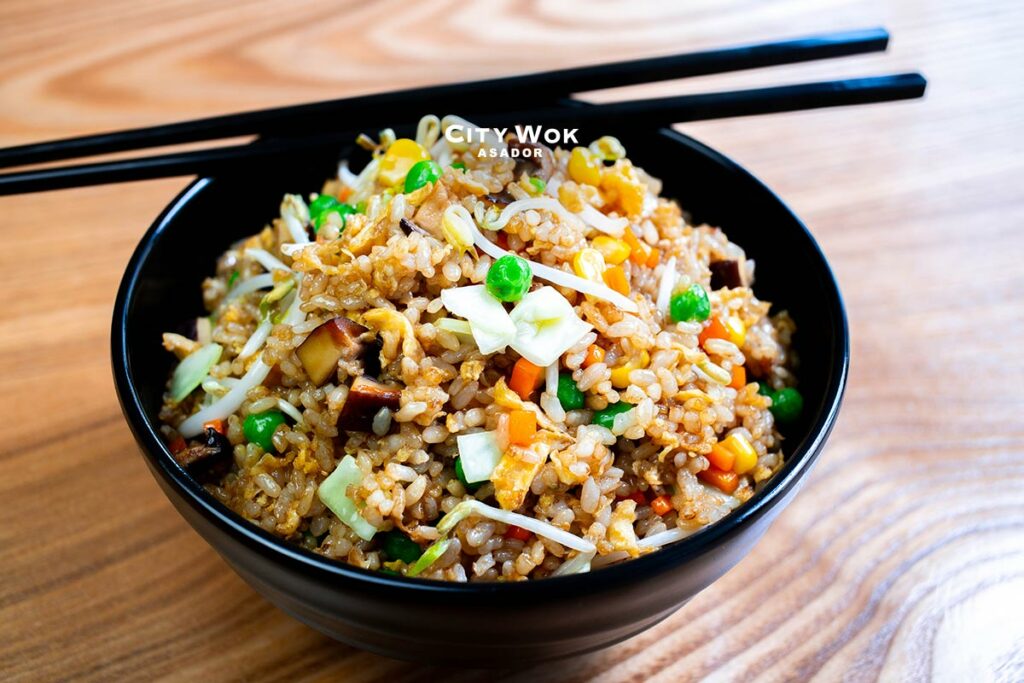Cocina asiática vs. cocina occidental

El Asador City Wok de Málaga es un claro nexo de unión entre las dos culturas gastronómicas más famosas del mundo: la asiática y la mediterránea. Puede resultar extraño, ya que el choque cultural de las dos gastronomías es grande. Por eso queremos hacerte un breve resumen de las diferencias que puedes encontrar entre estas dos grandes gastronomías.
No, no vas a poder elegir, porque las diferencias no vienen por los gustos. Estas dos cocinas clásicas tienen una larga tradición de recetas, alimentos típicos y formas de cocinar que varían mucho entre ellas. Pero, para empezar, ¿sabes de qué cultura gastronómica estamos hablando?
La cultura asiática engloba mucho más que la comida china. Comida japonesa, tailandesa o coreana, son algunas de estas cocinas que a grandes rasgos podemos englobar porque tienen en común muchos de los ingredientes, recetas o formas de cocinar. Pero sin duda, una de las características más llamativas de estas culturas es que hacen del placer del comer un juego de los 5 sentidos, ya que engloban los sabores, con la presentación y la cultura.
La gastronomía mediterránea, en cambio, se considera una de las más completas nutricionalmente y viene de los países de alrededor del mar mediterráneo. En concreto, en el Asador City Wok de Málaga, encontrarás platos típicos de nuestra zona. Esta gastronomía tiene como característica principal la sencillez de sus platos. Aunque muchas de las recetas tradicionales son muy elaboradas, por lo general reina la sencillez.
Platos muy condimentados VS. muchos ingredientes
Una de las diferencias más notorias de las dos culturas es el uso de condimentos y especias de una respecto a la otra. Y si, si has pensado en la asiática, has acertado. La cocina asiática tiene una larga tradición de utilización de condimentos y especias en sus platos, de hecho, son autóctonos de esta cultura y un claro ejemplo de esto son los sabores picantes muy tradicionales en estas culturas.
Formas de cocción
Aunque cada vez más, esta diferencia se empieza a equiparar por la globalización, tradicionalmente la forma de cocción asiática se ha basado en cocción al vapor y uso del Wok como principal herramienta de cocina. En cambio, en la cocina mediterránea tenemos una gran variedad de herramientas para cocinar, en las que evidentemente tiene una gran influencia en el gusto de los platos. Asado, al horno, en la sartén, en un gran paellón… cada receta precisa de su herramienta.
Dónde compran los alimentos
Las tradiciones asiáticas se han mantenido a lo largo de la historia mucho más que en nuestra zona. Lo que para nosotros es un clásico: ir al supermercado, en Asia la mejor comida la encontrarás en mercados. Lo que premia mucho la variedad y las especies y alimentos más exóticos.
Corte y uso de los ingredientes
Por ejemplo, un chuletón para nosotros es un clásico muy arraigado en nuestra dieta, en Asia no se contempla. Tradicionalmente en esta cultura, optan por cortes pequeños en los ingredientes, en cambio, nosotros por piezas grandes, como el chuletón. Esto tiene mucho que ver con los instrumentos que utilizan para comer. Los palillos precisan de alimentos más pequeños para que sea más fácil comer con ellos.
Sabores
¿Has escuchado hablar alguna vez de Umami? Es el 5 sabor, y es muy empleado en la cocina asiática. Para nosotros es casi un desconocido, ya que nuestra cultura gastronómica distingue como base el sabor salado y el dulce, pero en Asia juegan con los 5 sabores, incluso hay platos en los que los pueden llegar a combinar.
Alimentos básicos
¿Qué sería de la cultura mediterránea sin una barra de pan en la mesa? La base de nuestra alimentación se focaliza en el trigo, en cambio, en Asia se focaliza en el arroz. Un claro ejemplo de esto lo encontramos en la harina que se utiliza para elaborar platos: en Asia es de arroz, y nosotros utilizamos normalmente de trigo. Aunque podamos encontrar diferencias muy grandes entre estas dos culturas, también podemos encontrar similitudes, como por ejemplo alimentos básicos en ambas culturas: como las gambas y crustáceos, la miel, el uso de la pimienta como principal especia para cocinar.
En el Asador City Wok de Málaga, hemos unido lo mejor de los dos mundos para que puedas disfrutarlo en uno solo. ¡Te esperamos!